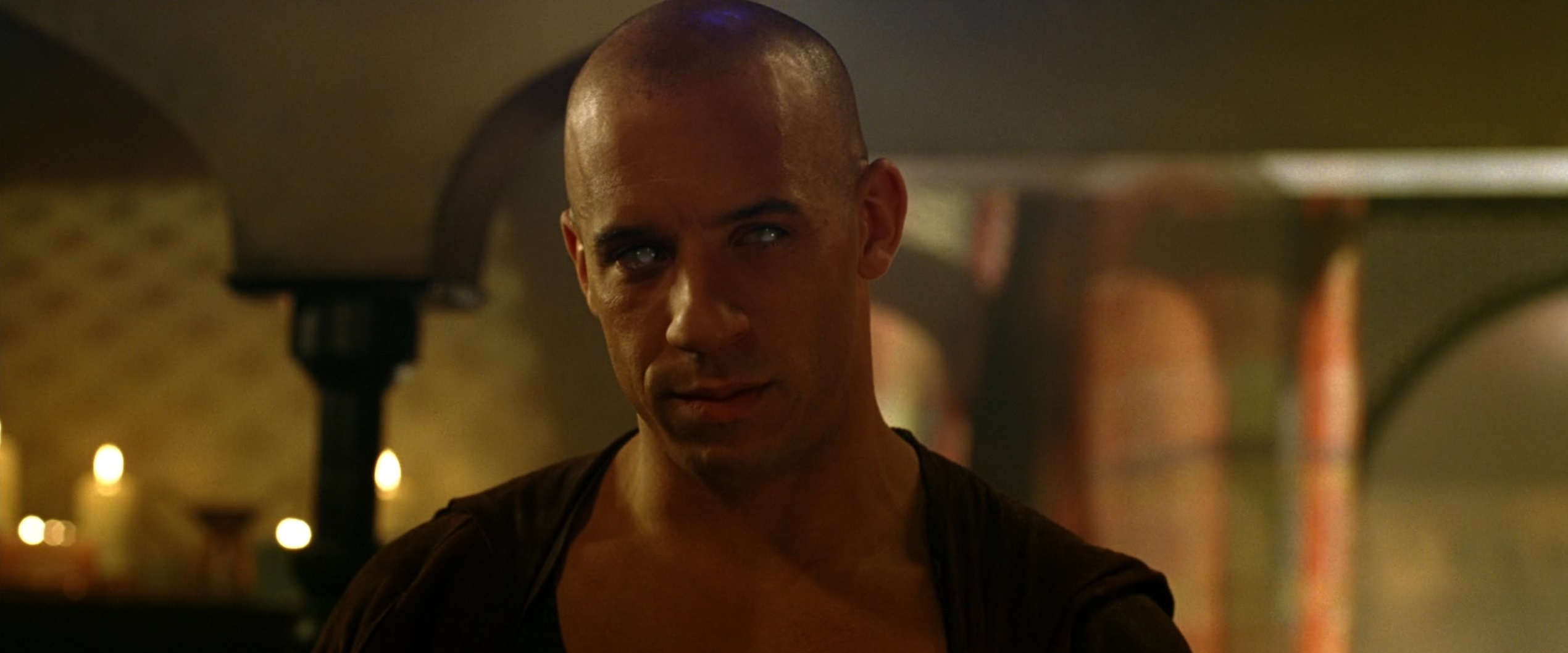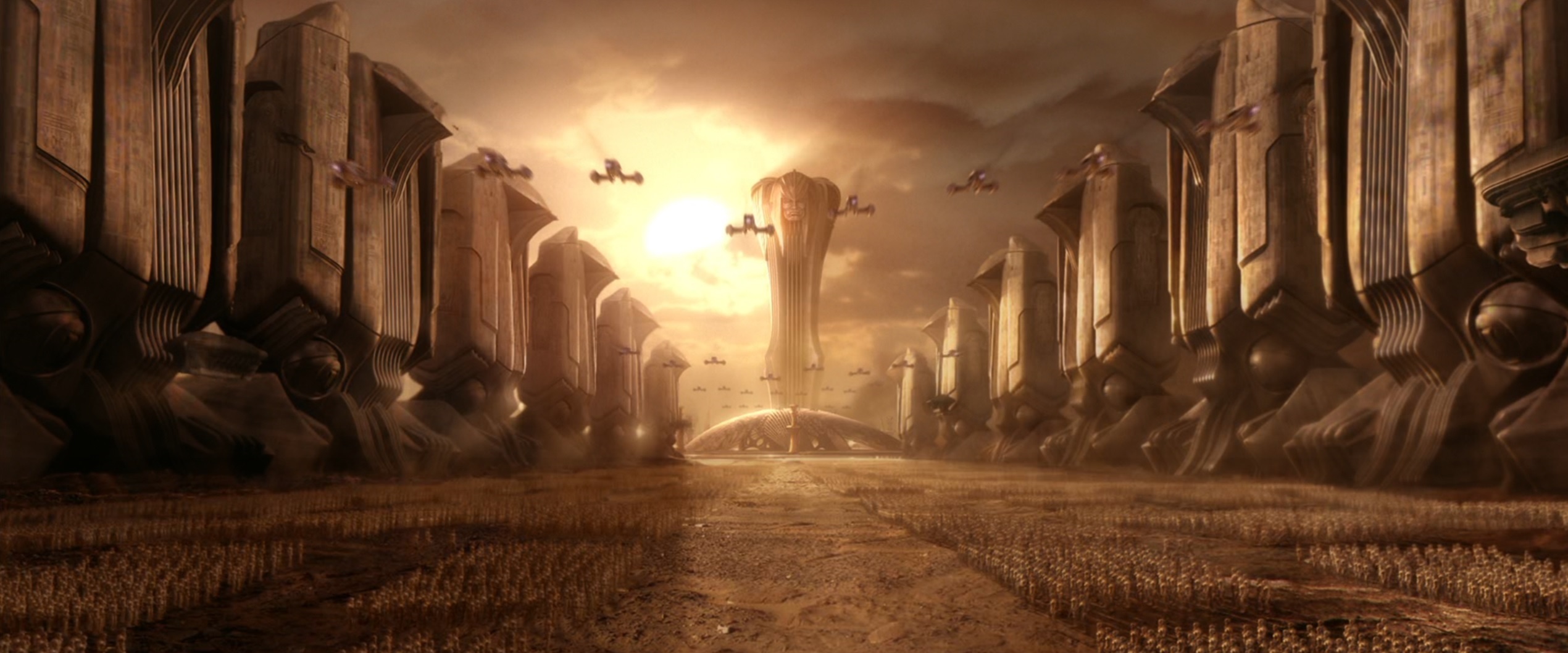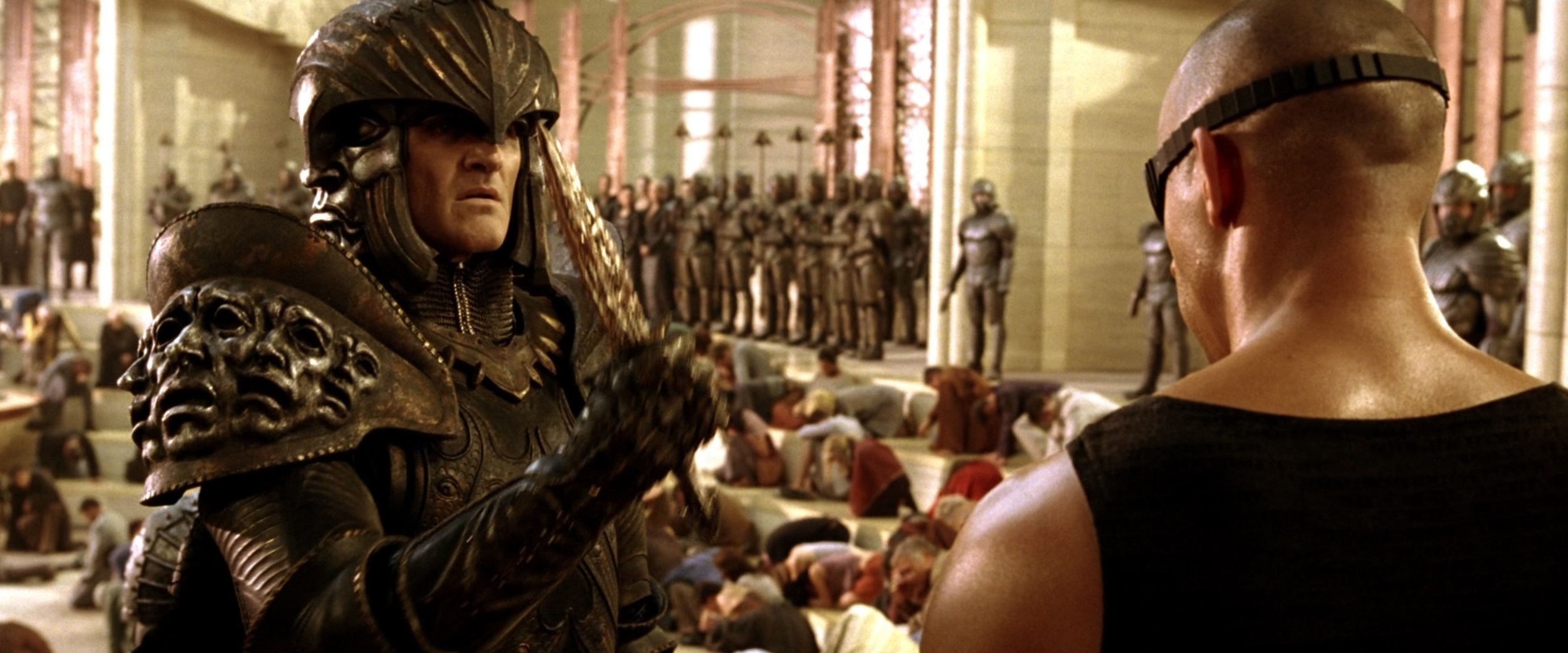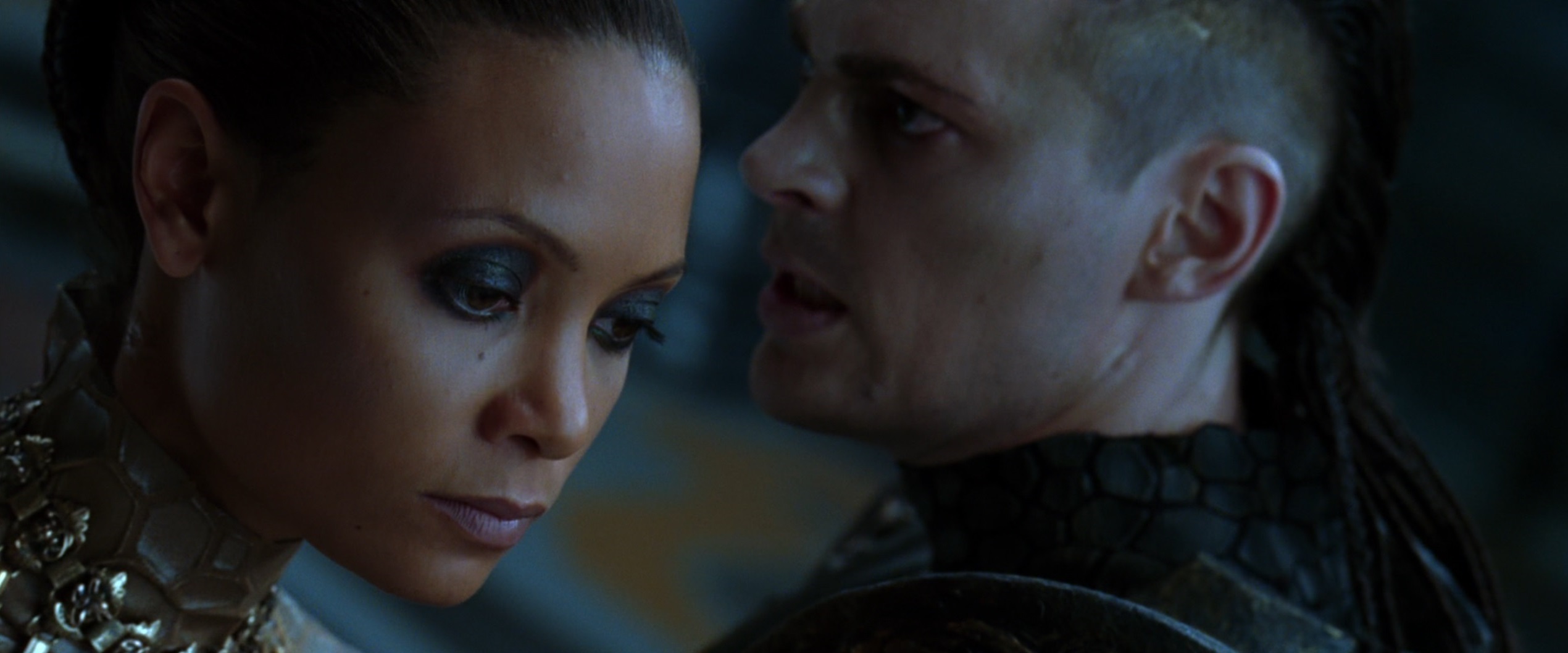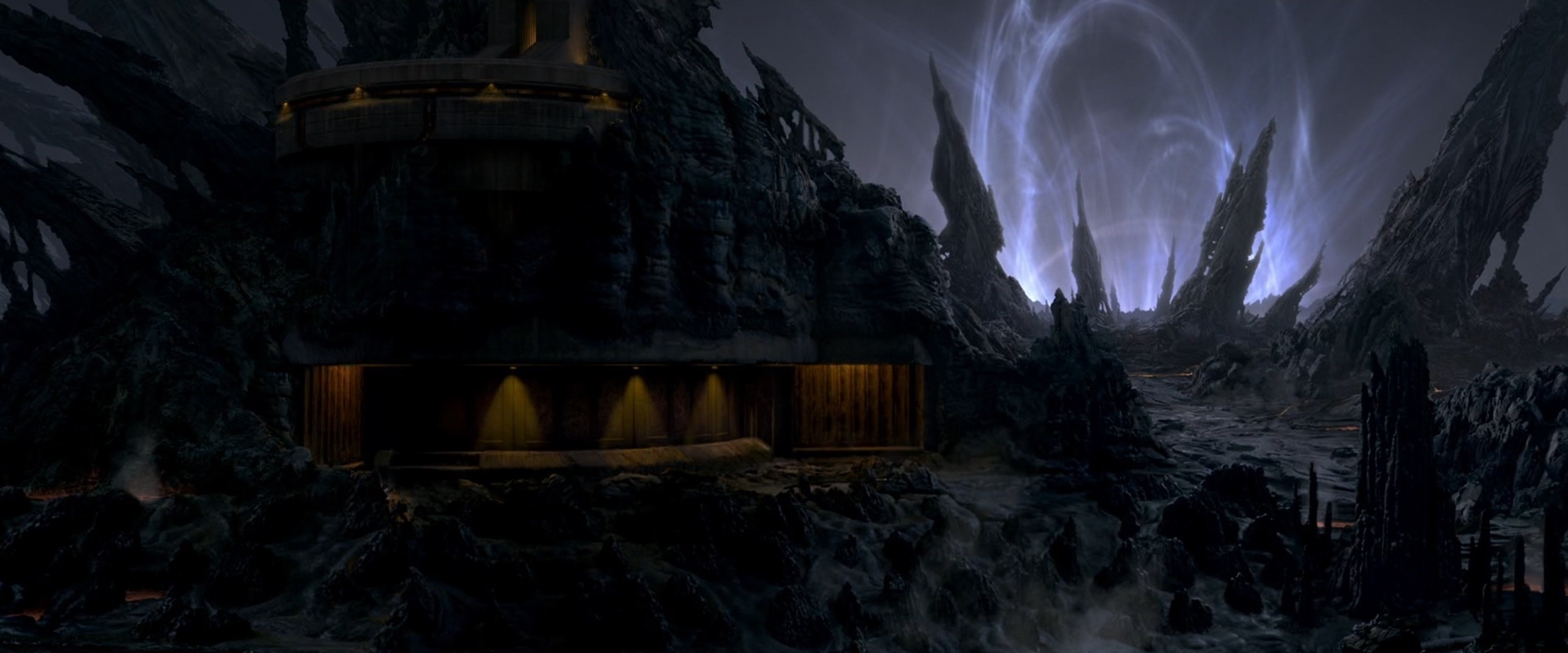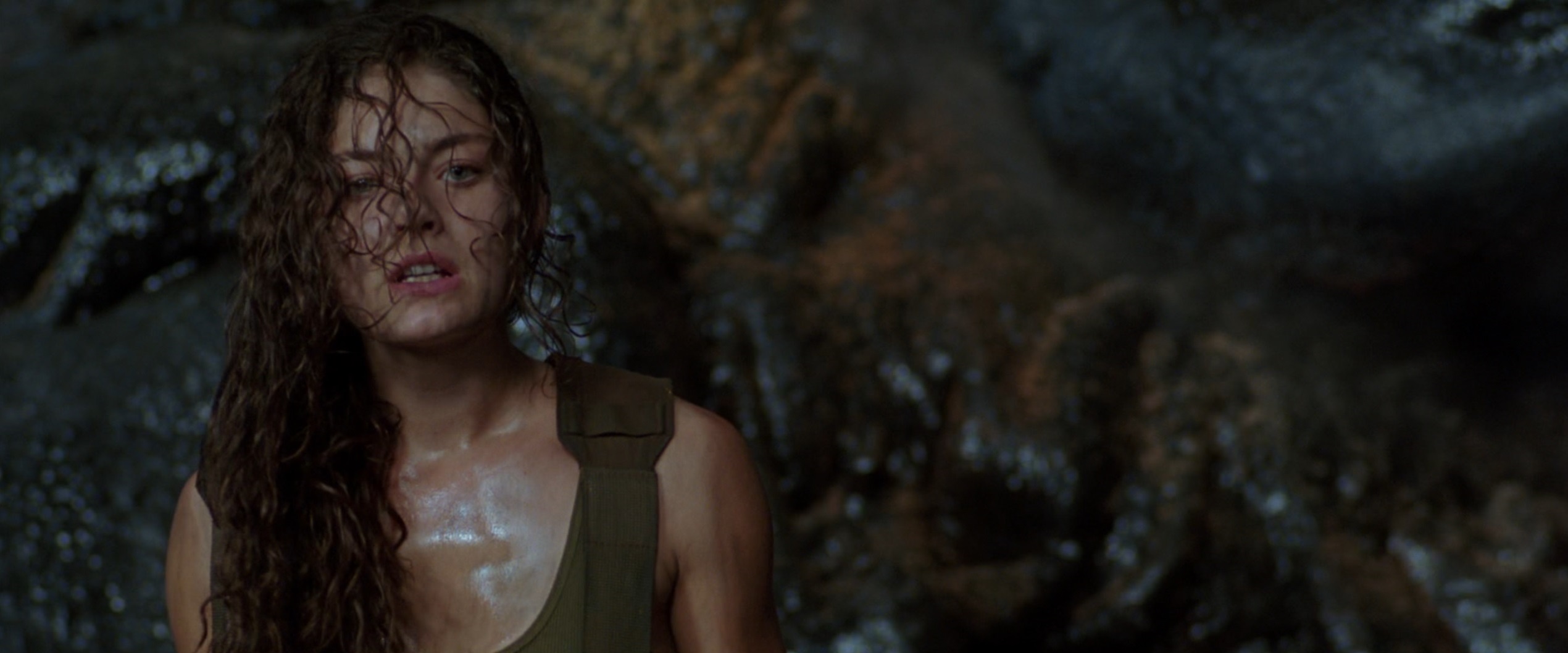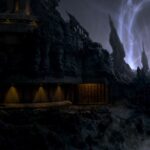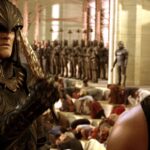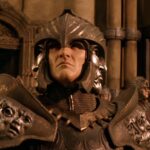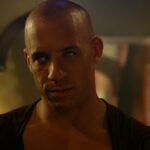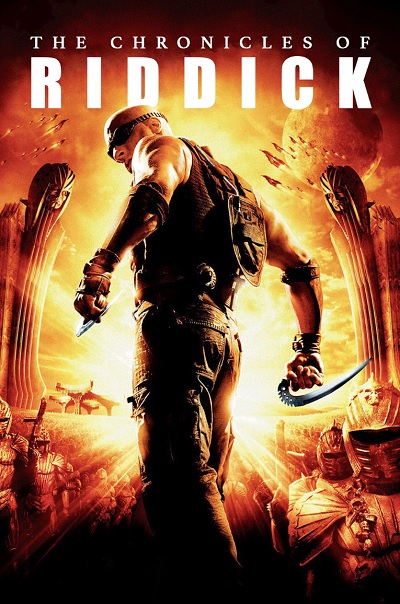
The Chronicles of Riddick was released in 2004 and was a sequel of sorts to the 2000 film Pitch Black. I say “of sorts” because while both shared the same director David Twohy and lead character played by Vin Diesel, the original was a slasher film with a science-fiction premise and the sequel was far more ambitious science-fiction epic. Indeed, a related video game prequel, The Chronicles of Riddick: Escape from Butcher Bay and a related animated short released alongside it with Diesel providing his voice and likeness in both. Unfortunately, the film did not see the success that was hoped and didn’t even make back it’s budget when released in theatres; it wasn’t treated much better by critics either.
Though it wasn’t ultimately successful, it wasn’t considered the disaster that films like Waterworld were; which incidentally, Twohy also co-wrote the script for. My general impression is that it was largely ignored and then forgotten except by few enthusiasts. Vin Diesel himself is no doubt among these enthusiasts as he had turned down appearing in sequels to his far more successful The Fast and the Furious and xXx films to work on this. Today his main claim to fame is still the former series and it is easy to forget that he didn’t appear in the immediate sequel and made only a cameo at the end of the third film. It wasn’t really until the fourth and fifth films that the series became a box office juggernaut. The immediate sequel to xXx starred Ice Cube and Diesel didn’t return to that role until 2017; some fifteen years later.
Though not performing well in theatres, the film presumably did well-enough with its home release on the then still popular DVD format to become profitable. It also developed a dedicated enough following that Twohy and Diesel were able to do another film which released in 2013 and was titled simply Riddick. Though continuing immediately after The Chronicles of Riddick, it is more a sequel to Pitch Black. It had a much smaller budget (which it seems to have made back), and the plot is in many ways a re-tread of the original film with grotesque monsters now brought out by rain instead of darkness.
The horror genre has never much appealed to me and it is only the science-fiction setting of films like Alien and Pitch Black that grabbed my attention. While it is understandable that they went for a cheaper and more bankable film, it was the attempt at a science-fiction epic that really appealed to me. There are relatively few science-fiction films and fewer still I would consider very good. Though The Chronicles of Riddick certainly has its issues, I consider it a great film and I hope here to expand on why.
The film begins five years after Pitch Black with Richard B. Riddick being pursued by bounty hunters. This takes place on an ice planet which provides an immediate contrast to the flat desert setting of the previous film. This is a short but entertaining actions sequence that establishes the character well for those not familiar with Pitch Black. Really like many of Diesel’s characters, Riddick is an anti-hero. This was a common trope at the time and remains so today. I find this trope tiresome generally but Riddick is much more interesting than most others and it fits well within the uncaring space-faring universe he inhabits.
Dispatching the bounty hunters leads him to Helion Prime and the city of New Mecca. That a religion mostly found in the more arid regions of earth would choose to spread to another desert planet in preference to one that is more verdant is not explained. I expect there is a deliberate nod to Dune here which itself was influenced heavily by Russian and British excursions into central Asia and the resistance they encountered. Nonetheless, the visual design here is very striking which can be used to describe most locations used in the film.
Here Riddick meets one of the two other survivors of Pitch Black; the Imam played by Keith David. It is revealed that Helion Prime will soon be invaded by the Necromongers, the primary antagonists of the film. Judy Dench also appears in person as the Air Elemental, Aereon and her character also serves as the film’s narrator. This section of the film is something of a “lore dump” with Riddick reveaked to be more than a murderous outlaw. He is in fact from a mysterious race known as “Furyan” who are from a lost planet aptly called Furya. This to the best of my knowledge, was all introduced in this film and was not mentioned at all in Pitch Black. It does however raise the stakes as well as the importance of Riddick in the narrative and will also be relevant to the long awaited Riddick: Furya film that is supposedly in production as I write.
The Necromongers invade soon after this and they are certainly the most interesting aspect of the film outside of the main character. To describe them using any originality is somewhat difficult but considering them a hybrid of Ghengis Kahn, his Mongol hordes and the Borg from Star Trek is a neat way to go about it. What makes them cooler is the dark fantasy aesthetic of their armour and uniforms. Though also using projectile weapons, they generally favour close combat and one rises within their ranks chiefly through martial prowess as they get to “keep what they kill.” There is also a religious motive to their group with a belief in something called the “Underverse” which only their leader, the Lord Marshal has seen. The Lord Marshal is played by Colm Feore who is one of those actors who you see in lots of films without really knowing who he is. I do have to single him out here as he is contrasts perfectly as an antagonist to Riddick.
Within the Necromongers, there is also some intrigue with Vaako played by Karl Urban as one of the Lord Marshal’s more ambitious commanders. His wife (played by Thandie Newton), inflames these ambitions in desiring to see her husband as the new Lord Marshall. This provides the chief source of tension among the Necromongers when Riddick isn’t causing chaos and the audience is left with the sense that the Lord Marshall is aware but not in fear of Vaako’s ambition.
The Necromongers quickly overwhelm Helion Prime or at least the single city we are shown. The people that aren’t killed are offered the chance to join the Necromongers which involves some sort of chemical injection. Any that resist are killed except for Riddick who easily defeats a Necromonger warrior before escaping the ship after they discover his Furyan heritage. He is then somewhat implausibly, recaptured by the bounty hunter Toombs who he had left alive in the film’s opening.
Riddick is taken to a prison called Crematoria which is beneath a moon that has its surface frequently scorched by the nearby sun. How this moon has an atmosphere — let alone one that is breathable to man — is not explained but it is visually interesting and sets up one of the most exciting scenes in the film. Something I found more implausible (which goes back to Pitch Black), is why in such a ruthless and uncaring world, they would make any effort to keep someone like Riddick alive to imprison in the first place. It would surely be more cost effective for bounty hunters to provide a dead body than a living one. Crematoria (and indeed the Butcher Bay from the video game), would surely be prohibitively expensive to maintain making this simple alternative preferable. Alas, the thinking audience is called to cast their questions aside on this as well and I honestly don’t mind too much.
Riddick has a very unlikely encounter with Jack (the only other survivor from the first film), in this prison. The actress has changed with Alexa Davalos playing the part and Jack now calling herself “Kyra”. This is another general criticism I have with the film in that even if it was the same actress, she doesn’t fit the original character. It would have been much better to have made this “Kyra” someone he’d known earlier from somewhere else or better still: tied her in with the two pieces of media released at the time. Still, it works; at least in the sense that it provides some emotional tension for Riddick and a reason for him to carry on beyond simply wanting to escape his new prison.
The overall plot falls into the background on Crematoria and the Necromongers only come back into it for the film’s climax. After a few scenes within the prison including some with some beasts created from dated CGI, Riddick and a number of prisoners are able to escape. Their escape necessitates travelling towards the prison’s only hanger in a race to claim the only remaining ship within. All the time the sun’s rays are lashing the ground just behind them. As stated, that they could breathe let alone travel in such an environment is silly but it’s best to just enjoy the spectacle of it.
I will not describe the events of the film beyond this but it is brought to a satisfying as well as a surprising conclusion. While I wouldn’t describe the ending as a cliff-hanger, it did end with more story to tell. Sadly, the conclusion of the film was lazily handwaved away in the opening moments of the sequel that followed almost a decade later. I hope that the upcoming film (in which both Twohy and Diesel are involved), has more connection to this film as I far prefer the direction it took the character universe.
It was a long time later but I did play the related video games a few years ago titled The Chronicles of Riddick: Escape from Butcher Bay and Assault on Dark Athena. The latter is really more of a short expansion of the former and was released in a package with an enhanced version of the original in 2009 for the Xbox 360, PlayStation 3, Mac and PC. As of writing, these are not available to buy due (I assume), due to those ever pesky licensing issues. Both are first-person stealth/action games with the action being much more of an emphasis in the sequel. Butcher Bay is definitely the better experience but they both hold up and provide background information to Riddick as a character (including his famous shining eyes), and his experiences before the films. It was obvious that Vin Diesel himself was passionate about these side projects and I’d give them my general recommendation.
To finish, I want to reiterate that it really is a shame that The Chronicles of Riddick wasn’t more successful at the time. It released after the disappointing Matrix sequels and the year before Star Wars: The Revenge of the Sith. It also came out after the third Lord of the Rings film. So it was generally a good time for science-fiction and fantasy films but sadly just didn’t grab the public attention the way these other films did — at least at the box office. Still, it does hold up better than many of the films from the time and I certainly enjoyed it.

